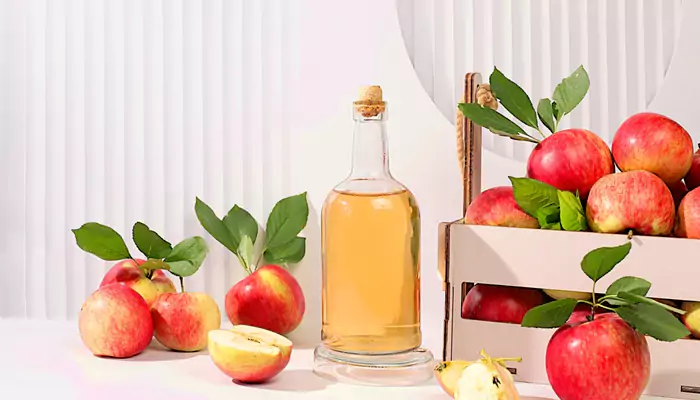How to Make Low-Calorie Sauces That Don't Skimp on Flavor
The key is making your own sauces at home, out of fresh and healthy ingredients, substitutions, and clever use of flavours.
- Shriparna
- 15 June, 2025
- 2 mins ago

How to Make Low-Calorie Sauces That Don't Skimp on Flavor
The key is making your own sauces at home, out of fresh and healthy ingredients, substitutions, and clever use of flavours.
Sauces are the nemesis of healthy eating. They add rich, moist texture and most importantly, flavour. Sadly, most sauces you get from the supermarket are basically filled with calories, unhealthy fats, and hidden sugars. Not so good news: But don't fret, you will still enjoy all that delicious sauce taste without unnecessary overload on your calories.
The Power of Herbs and Spices
One of the easiest ways to cut calories without sacrificing flavor is by leaning into the world of herbs and spices. Fresh herbs can brighten any sauce with no calories: cilantro, parsley, basil, dill, and others. Paprika, cumin, turmeric, and chili powder can elevate a sauce's flavor profile in seconds. These pack a punch without needing oils, creams, or sugars to back them up.
For example, take a yogurt-based herb dressing instead of a traditional mayonnaise-heavy ranch. Combine non-fat Greek yogurt with lemon juice, garlic, fresh dill, parsley, and a hint of salt and pepper. The yogurt is creamy, yet you save significant calories, and the herbs and spices give you bold, punchy flavors.
Use Low-Calorie Bases
The difference when making sauces comes from the base of ingredients you use. Many of the authentic recipes for sauces begin with a calorie-rich base of butter, cream, or oils. But I will show you a number of low-calorie alternatives that can be just as richly textured.
Pureed vegetables are another great choice. Roast red peppers, tomatoes, or eggplant and make smooth, flavorful sauces that are very low in calories. A roasted red pepper sauce can be made by blending roasted peppers, garlic, a splash of vinegar, and vegetable broth into a healthy and delicious dish. This sauce is perfect for tossing with pasta or using as a drizzle over grilled meats, or as a dip for veggies.
A good substitute is non-fat Greek yogurt. This doesn't add calories, unlike the sour cream or heavy cream used to give sauces a creamy mouthfeel. There are numerous uses from tangy, savory sauces such as tzatziki (yogurt, cucumber, garlic, and lemon juice) to sweet sauces, like a honey-yogurt drizzle over fruit.
Use Vinegar and Citrus for Fierceness
Acid is a sneaky super star of low-calorie cooking. Vinegars and citrus juices add such zesty brightness to sauces without adding any measurable calories. From balsamic, apple cider, to rice vinegar, the variety goes on and on to represent flavors. Lemon, lime, and orange juice will all give depth and enhance the natural flavor of your ingredient.
This is that vinaigrette that is synonymous with a simple dressing made with lemon juice, Dijon mustard, a touch of olive oil, and salt and pepper. It replaces heavy salad dressings, not only cutting the calorie count but also making you feel like it's shaking awake those inactive taste buds in addition to adding some complexity to it.
For a bolder flavor, try using flavored vinegars or infusing your vinegar with herbs like rosemary or thyme. This will give your sauces an extra layer of flavor without any added calories.

Use Broth and Starch Wisely
Broths can be great bases for sauces if you want to keep calories really low. Chicken or beef adds a lot of flavor without any heavy cream or butter calories. However, broth is too dilute on its own for most sauces so needs a thickening agent.
Instead of flour or butter, use cornstarch or arrowroot powder as a thickener. Both work well and have very few calories added to a sauce. To thicken a broth-based sauce, mix one teaspoon of cornstarch with water to make a slurry; then add it to your simmering broth.
For example, low-calorie gravy can be prepared by thickening chicken or beef broth with a cornstarch slurry, garlic, and fresh herbs; it is full of flavor and has the savory taste without added heavy creams and extra fats.
DoNot Forget Mustard and Hot Sauce
Mustard and hot sauce are a couple of superpower ingredients when it comes to low-calorie cooking. Both are free of calories and give punch to any sauce.
Mustard is a strong, sharp condiment, especially Dijon, which is great in dressings, marinades, and dipping sauces. Simply combine it with vinegar, a splash of olive oil, and fresh herbs for a simple yet tasty mustard vinaigrette.
But then there is hot sauce. The good thing about hot sauces is that they have flavor with added heat with no calories. Whether you enjoy smoky chipotle, hot and tart Sriracha, or whatever your favorite flavor may be, a little hot sauce can add real depth to a bland tomato sauce or turn a simple vinaigrette into something really interesting.
Creating low-calorie sauces that do not shave off all the flavor is easier than you think. Using fresh herbs, spices, acids, and healthy substitutions can make healthier and more satisfying sauces. From light vinaigrettes over a salad to creamy yogurt-based sauce for pasta, options abound. Next time you're in the kitchen, try these techniques to have sauces that are high on flavor and light on calories.










